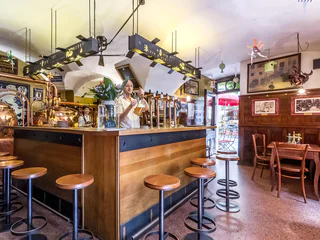
Parish church Henry from Bozen/Bolzano
La Costa/Seit, Laives/Leifers, Bolzano/Bozen and environs
| Zanurz się w kulturze Bozen i okolic. Region ten oferuje wiele zabytków i wydarzeń kulturalnych, które przybliżą Ci bogatą historię i tradycje Południowego Tyrolu. |

La Costa/Seit, Laives/Leifers, Bolzano/Bozen and environs

1/5
Bolzano Centro/Bozen Zentrum, Bolzano/Bozen, Bolzano/Bozen and environs

1/2
Verschneid/Frassineto, Mölten/Meltina, Bolzano/Bozen and environs

1/5
Salonetto/Schlaneid, Mölten/Meltina, Bolzano/Bozen and environs

Avigna/Afing, Jenesien/San Genesio Atesino, Bolzano/Bozen and environs

S. Osvaldo/St. Oswald - Bolzano/Bozen, Bolzano/Bozen, Bolzano/Bozen and environs

Don Bosco/Don Bosco, Bolzano/Bozen, Bolzano/Bozen and environs

1/2
Vadena/Pfatten, Bolzano/Bozen and environs

1/2
Frassineto/Verschneid, Mölten/Meltina, Bolzano/Bozen and environs

Sarentino/Sarnthein, Sarntal/Sarentino, Bolzano/Bozen and environs

1/3
Gries/Gries, Bolzano/Bozen, Bolzano/Bozen and environs

1/3
Seit/La Costa, Laives/Leifers, Bolzano/Bozen and environs

1/3
S. Genesio Atesino/Jenesien, Jenesien/San Genesio Atesino, Bolzano/Bozen and environs

Meltina/Mölten, Mölten/Meltina, Bolzano/Bozen and environs

Pietrarossa/Rotwand, Ritten/Renon, Bolzano/Bozen and environs

1/2
Bolzano Centro/Bozen Zentrum, Bolzano/Bozen, Bolzano/Bozen and environs

1/4
S. Maddalena/St. Magdalena - Bolzano/Bozen, Bolzano/Bozen, Bolzano/Bozen and environs

Bolzano Centro/Bozen Zentrum, Bolzano/Bozen, Bolzano/Bozen and environs

Pietrarossa/Rotwand, Ritten/Renon, Bolzano/Bozen and environs

1/7
Don Bosco/Don Bosco, Bolzano/Bozen, Bolzano/Bozen and environs

1/3
Frassineto/Verschneid, Mölten/Meltina, Bolzano/Bozen and environs

Bolzano Centro/Bozen Zentrum, Bolzano/Bozen, Bolzano/Bozen and environs

S. Costantino/St. Konstantin, Völs am Schlern/Fiè allo Sciliar, Bolzano/Bozen and environs

Piani di Bolzano/Bozner Boden, Bolzano/Bozen, Bolzano/Bozen and environs

1/3
Caldaro Campi al lago/Kalterer Klughammer, Vadena/Pfatten, Bolzano/Bozen and environs

Schlaneid/Salonetto, Mölten/Meltina, Bolzano/Bozen and environs

S. Genesio Atesino/Jenesien, Jenesien/San Genesio Atesino, Bolzano/Bozen and environs

1/2
Bolzano Centro/Bozen Zentrum, Bolzano/Bozen, Bolzano/Bozen and environs

1/3
Oltrisarco/Oberau, Bolzano/Bozen, Bolzano/Bozen and environs

Nobls/Nobls, Jenesien/San Genesio Atesino, Bolzano/Bozen and environs